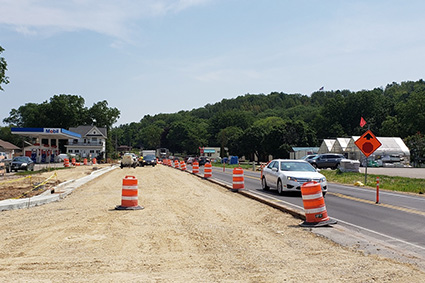 Reducing traffic through work zones allows work to be completed efficiently, quickly and safely. At the same time, business owners and operators want to maintain access to their businesses, so customers and employees can reach their destinations as easily as possible.
Reducing traffic through work zones allows work to be completed efficiently, quickly and safely. At the same time, business owners and operators want to maintain access to their businesses, so customers and employees can reach their destinations as easily as possible.
When four lanes are reduced to two lanes, or when two lanes are narrowed to one lane, it’s essential to reduce traffic by a significant amount. Even when the highway capacity is cut in half, diverting 10 to 20% of the traffic flow to other routes can keep the traffic stream workable for both drivers and the contractor. That permits the remaining 80 to 90% of traffic to flow through the work zone at a reasonable speed and allows drivers to reach businesses and residences along the route.
Traffic is like an overflowing river - it takes the path of least resistance. It may follow a marked detour route. But most local traffic spills onto nearby streets and roads drivers are familiar with, and drivers find their own way to circumvent construction.
When the highway is under construction while open to traffic, WisDOT suggests drivers use alternate routes.
 We're in this together – accommodating customer traffic
We're in this together – accommodating customer traffic
- Tell customers and employees about traffic restrictions. You might consider brochures or flyers for the public or employees. Billing or paycheck inserts can also be very effective.
- Help your suppliers and their truck drivers identify alternate routes to your business or industry. Do this before construction begins.
- Schedule shipments at non-peak travel times when possible and consider routes that enable your outgoing vehicles to avoid the work zone.
- Encourage your employees to use alternate transportation.
- Some companies may consider sponsoring carpool or vanpool programs, or encourage employees to use existing programs.
- Some businesses may consider schedule changes where feasible.
- Consider telecommuting or other strategies that allow employees to work at home.
- Use temporary signage to direct customers to your business.